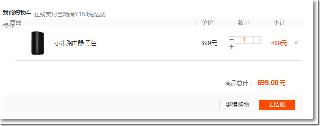Django REST 异常处理详解
异常
异常处理…允许错误处理在程序结构的中心或者高层级的地方被清晰有条理的组织起来。
Exceptions… allow error handling to be organized cleanly in a central or high-level place within the program structure.— Doug Hellmann, Python Exception Handling Techniques
Rest框架视图中的异常处理
Exception handling in REST framework views
REST框架的视图处理了各种异常,并正确地返回了错误响应。
REST framework’s views handle various exceptions, and deal with returning appropriate error responses.
被处理的异常有:
Rest框架内部抛出的APIException的子类。
Django的Http404异常。
Django的PermissionDenied异常
针对每种情况,REST框架将返回一个包含了正确的状态码和content-type的响应。响应体包含了任何关于错误本身的额外细节。
大部分的错误响应将在响应体中包含了一个detail的键。
例如下面请求:
DELETE http://api.example.com/foo/bar HTTP/1.1
Accept: application/json
你还可能接收到一个错误响应,表明对该资源DELETE方法不允许的。
HTTP/1.1 405 Method Not AllowedContent-Type: application/jsonContent-Length: 42{'detail': 'Method ’DELETE’ not allowed.'}
校验错误的处理有些轻微的不同,它会把字段的名字作为键包含进来。如果校验错误没有被指定到一个特定的字段,那么它会使用non_field_errors作为键,或者是你在setting文件中设定的NON_FIELD_ERRORS_KEY任意字符串的值。
任何校验错误将类似下面的形式:
HTTP/1.1 400 Bad RequestContent-Type: application/jsonContent-Length: 94{'amount': ['A valid integer is required.'], 'description': ['This field may not be blank.']}
自定义异常处理
你可以实现你的自定义异常处理。可以通过创建一个异常处理函数将API视图中抛出的异常转换成响应对象。这样一来,你就可以控制你的API使用的错误响应格式。
这个异常处理函数必须传入两个参数,第一个是要处理的异常,第二个是一个包含了任何额外上下文信息(例如当前被处理的视图)的字典。该异常处理函数要么返回一个Response对象,要么在异常无法处理的时候返回None。如果返回了None,异常将会被重新抛出,最后Django会返回一个标准的HTTP 500 ‘服务器错误’的响应。
例如,你可能希望保证所有的错误响应体中都包含了HTTP状态码,像这样:
HTTP/1.1 405 Method Not AllowedContent-Type: application/jsonContent-Length: 62{'status_code': 405, 'detail': 'Method ’DELETE’ not allowed.'}
为了更改响应的格式,你可以编写如下的自定义异常处理函数:
from rest_framework.views import exception_handlerdef custom_exception_handler(exc, context): # Call REST framework’s default exception handler first, # to get the standard error response. response = exception_handler(exc, context) # Now add the HTTP status code to the response. if response is not None: response.data[’status_code’] = response.status_code return response
参数context没有被默认的异常处理器使用,但是如果你需要更多的信息,例如你想获得当前被处理的视图,它就能给你援助之手了。通过context[’view’]就可以获取当前视图。
同时你必须在你的settings中配置异常处理器,显式地给EXCEPTION_HANDLER设置你期望的值,例如:
REST_FRAMEWORK = { ’EXCEPTION_HANDLER’: ’my_project.my_app.utils.custom_exception_handler’}
如果没有指定,’EXCEPTION_HANDLER‘默认使用的是REST框架提供的标准的异常处理器:
REST_FRAMEWORK = { ’EXCEPTION_HANDLER’: ’rest_framework.views.exception_handler’}
注意一点,异常处理器仅仅在响应是由抛出的异常产生时被调用。如果由视图直接返回的响应,它将不会被调用,例如HTTP_400_BAD_REQUEST响应是在序列化校验失败时由generic视图返回的,此时异常处理器就不会被调用。
API 引用
APIException
Signature: APIException()
所有在APIView类中或者@api_view抛出的异常的基类。
为了提供自定义异常,自定义个类,继承自APIException,并设置.status_code和.default_detail属性。
例如,如果你的API依赖第三方服务,这个服务有时候可能会不可用,你或许可以考虑为”503 Service Unavailable”HTTP响应码实现一个异常类,你可以这么做:
from rest_framework.exceptions import APIExceptionclass ServiceUnavailable(APIException): status_code = 503 default_detail = ’Service temporarily unavailable, try again later.’
ParseError
Signature: ParseError(detail=None)
在访问request.data的时候,如果请求包含了非法的数据,就会抛出该错误。
默认,该异常返回”400 Bad Request”状态码。
AuthenticationFailed
Signature: AuthenticationFailed(detail=None)
当请求包含了错误的认证信息的时候抛出。
Raised when an incoming request includes incorrect authentication.
默认情况下,该异常返回401 Unauthenticated,但是也有可能返回403 Forbidden,这取决于使用的认证模式。详细内容参考authentication documentation
NotAuthenticated
Signature: NotAuthenticated(detail=None)
当未认证的请求权限验证失败时抛出。
默认情况下,该异常返回401 Unauthenticated,但是也有可能返回403 Forbidden,这取决于使用的认证模式。详细内容参考authentication documentation
PermissionDenied
Signature: PermissionDenied(detail=None)
当一个经认证的请求在权限校验失败时抛出。
默认返回403 Forbidden
NotFound
Signature: NotFound(detail=None)
当给定的URL不存在时抛出。该异常等效于标准的DjangoHttp404异常。
默认返回404 Not Found.
MethodNotAllowed
Signature: MethodNotAllowed(method, detail=None)
在视图中没有与请求匹配的处理方法时抛出。
默认返回405 Method Not Allowed
NotAcceptable
Signature: NotAcceptable(detail=None)
当请求的接受头不满足任何可用的渲染器时抛出。
默认返回406 Not Acceptable
UnsupportedMediaType
Signature: UnsupportedMediaType(media_type, detail=None)
当访问request.data时,没有解析器来处理请求数据的内容类型时抛出。
默认返回415 Unsupported Media Type
Throttled
Signature: Throttled(wait=None, detail=None)
当请求超过最大限制时抛出。
默认返回429 Too Many Requests
ValidationError
Signature: ValidationError(detail)
ValidationError跟其他的APIException类稍微有些不同:
The ValidationError exception is slightly different from the other APIException classes:
detail参数是强制的,非可选。
detail参数可以是错误细节的列表或者字典,也可以是一个内嵌的数据结构。
约定中,你应该导入序列化器模块并使用完整描述的ValidationError格式,这是为了跟Django的内置检验错误区分开来。例如.raise serializers.ValidationError(’This field must be an integer value.’)
ValidationError类应该通过验证器类为序列化器和字段校验使用。它也会在调用serializer.is_valid方法,并指定了raise_exception时被抛出。
serializer.is_valid(raise_exception=True)
在generic视图中使用raise_exception=True标记,意味着你可以在你的API中全局复写校验错误响应的格式。如果你要这么做,建议你使用一个自定义的异常,上文有描述。
默认情况下,该异常返回400 Bad Request
更多阅读官方原文链接
以上这篇Django REST 异常处理详解就是小编分享给大家的全部内容了,希望能给大家一个参考,也希望大家多多支持好吧啦网。
相关文章:

 网公网安备
网公网安备